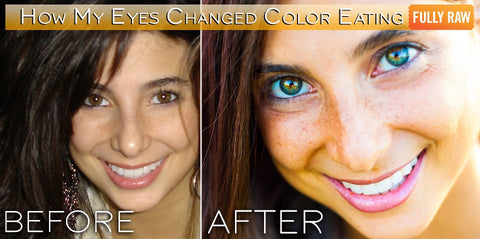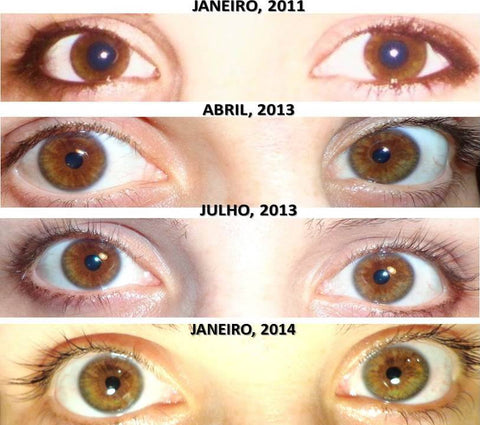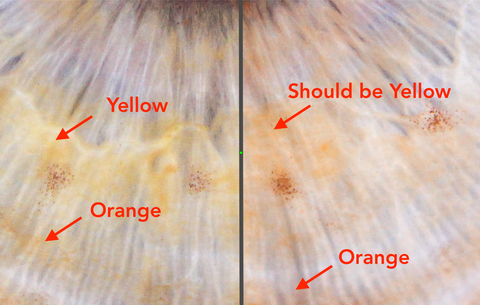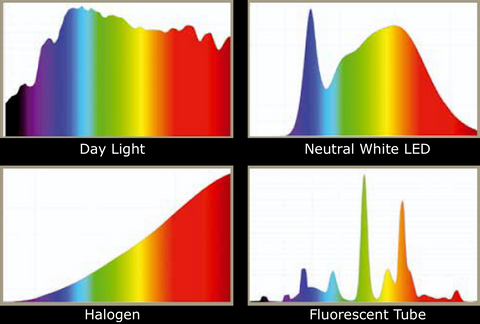-
SHOP
- Software
-
Services
-
MORE
October 27, 2016
This is one of the questions about iridology I hear most often.I’d love to have a single clear answer, but unfortunately I don’t have an answer.
Iridology in it’s current state still needs to progress in order to answer this properly.There are many articles, photos and videos on the Internet claiming iris colours change, usually after going on a detox diet.
Here are some examples: P1, P2, P3



However coming back to the question: Do irises change?
Personally, I have a passion for holistic health and use iridology as part of a broad set of sources of information. I also have a background in science which means I am uncomfortable when a claim is built on unstable facts. If you look closely at these example photos, the iris colour does indeed look different. However, we can also see the skin colour is different as well. Either the detox dramatically changed their skin colour, or the light source is different and/or the cameras colour settings are different. We can’t guess at the camera settings, but from some shots it’s pretty obvious when looking at the reflection in the iris, that the light source is in fact completely different, in some cases the before and after mixing both natural and artificial light.
If that is the case those images have no value to back their claims of irises changing colour.
These articles with poor use of scientific methodology harm iridology as a whole. My desire to improve the methodology of Iridology and avoid this kind of misperception actually lead me to setup Irislab to increase the quality of iriscopes, which is the most important tool in iridology affecting our ability to consistently observe the Iris.
Lighting is critical!!! Example P4 shows the same iris photo with a 5% change to the colour balance. Often such a small change can make a dark yellow pigment look orange and vice versa.

White light isn’t just white light… the simple way of measuring the ‘temperature’ of white light i.e. the balance of blue and red is in Kelvin (K) as in Photo P5, but even that is too limiting. If you remember from your primary school physics, the colour white is actually a mix of all the colours in varying proportions. The amount of light of a particular colour (wavelength) varies tremendously (P6) and creates a pattern.


Another important part in seeing the colours of the iris is the computer monitor that’s used to observe iris photos, to minimise this source of variance look for a calibrated monitor.
It can get a little complex, but the key to remember is: ‘white light’ from one source is rarely the same as ‘white light’ from another source. So when looking at “before and after” comparison photos, be sensitive to this and pay attention to the tell-tale signs showing that a different light source has been used.
To be able to claim that an iris has changed, a high resolution camera iriscope needs to be used, with a balanced and strictly controlled light source.
Iridology will have a tough time being taken seriously unless practitioners on the one hand are discerning/scientific in their approach and use standardised equipment to make comparisons.
Matthew D’haemer
Comments will be approved before showing up.
August 31, 2024
your mind and beliefs might be your most potent yet overlooked superpower in guiding your clients toward better health outcomes?
In the realm of medical science, the placebo effect is a fascinating phenomenon that illustrates how a patient’s beliefs can significantly impact their health. But there’s more to it. What if your beliefs as a practitioner could also influence your clients’ healing journeys?
November 20, 2019
Hello everyone! I'm Emeline Courcelle, a naturopath apprentice in France, and I recently joined the Irislab team. Let's introduce myself :)
